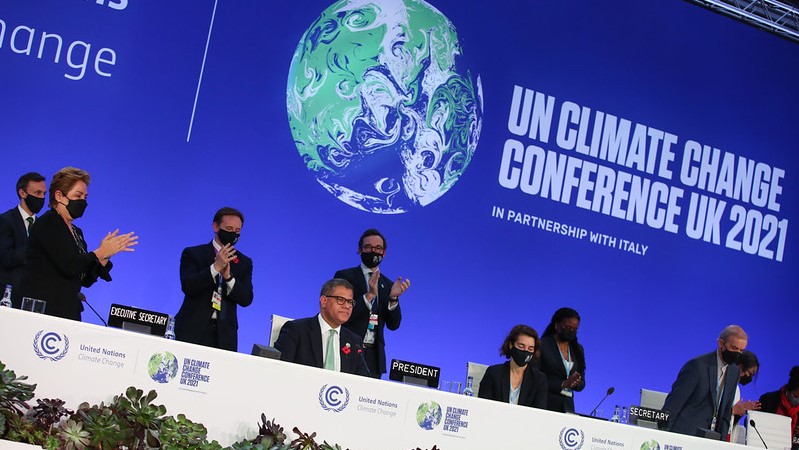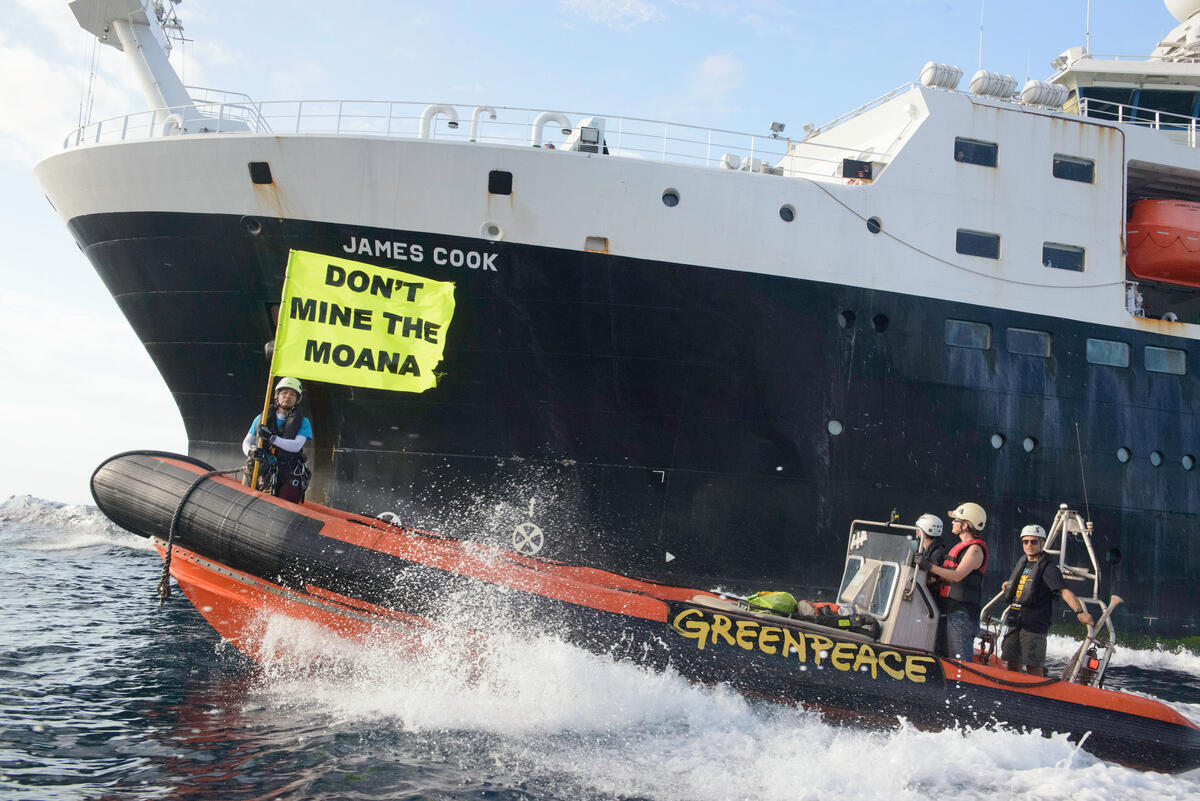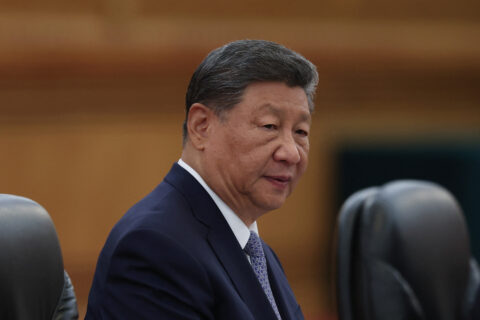Andreas Sieber is the associate director of global policy and campaigns at 350.org.
It is no accident that the COP30 presidency convenes consultations on Thursday, a day after the UN Climate Summit. Wednesday’s speeches offered proof that, even amid geopolitical upheaval, the Paris Agreement still drives momentum. At the same time, the hard truth was clear well before the summit: the pledges do not add up.
COP30’s credibility rests on how it confronts this ambition gap. Attempts to spin COP30 as a success without such a response seem hollow. If COP30 must respond to this ambition gap, a cover decision emerges as the most credible path forward.
COP30 brings the ambition cycle of the Global Stocktake (GST), launched at COP28, to a close. The ambition gap is often framed through the temperature threshold, but it runs deeper, encompassing adaptation, loss and damage, and finance, all of which are falling dangerously short.
Countries trail COP30 clash over global response to shortfall in national climate plans
A cover decision is surely not the only marker of success: the Belém Action Mechanism on Just Transition, an ambitious Baku-to-Belém roadmap, and a Global Goal on Adaptation are just a few among other high-stakes deliverables. But it is one decisive piece of the puzzle.
Breaking through entrenched negotiations
Why do we need one in the first place? Anyone who sat through the UAE Dialogue or Mitigation Work Programme earlier this year, will have more than serious doubts that these rooms can overcome their entrenched dynamics to deliver adequate outcomes, let alone allow the broader dealmaking required.
That is why a cover decision emerges as the most credible way to confront the ambition gap head-on – and here it is the Brazilian presidency that holds the pen.
A cover decision is no magic bullet to solve negotiation challenges, but it offers the best-placed procedural vehicle to balance different elements of the ambition package, allowing a race to the top instead of zero-sum trade-offs.
At the last COP, we saw mitigation pitted against finance, and without real commitments – especially credible new finance from wealthy countries – that history risks repeating itself. Process alone is no guarantee of success, but a misguided process is a recipe for failure. It’s also noteworthy that the COP29 presidency, due to a lack of political will or misguided strategy, refused to engage with the idea of a cover decision.
Instead of discussing several crunch issues across different rooms, a cover decision can bring topics together in the same room and the same text.
What should a cover decision include
A cover decision can anchor critical finance outcomes that otherwise lack a formal home, from the Baku-to-Belém roadmap to a meaningful scale-up in adaptation finance, with tripling as the obvious first step.
This is not about creating a procedural parking lot; it is about giving key outcomes real political and procedural weight. Linking the roadmap’s $1.3 trillion mobilisation goal for 2035 to concrete donor commitments through a cover decision would turn aspiration into accountability.
Responding to the ambition gap will also require initiatives that target the sectors driving the crisis. This could mean establishing a dedicated working group on phasing out fossil fuels, anchored in equity and 1.5°C consistent timelines, with a mandate that connects its work to COP31 under the incoming Presidency.
Brazil’s environment minister suggests roadmap to end fossil fuels at COP30
It could also mean reinforcing and expanding the COP29 Grids Initiative, this time with concrete public finance commitments attached. Both initiatives could be launched through presidential declarations and then captured and formalised within a cover decision.
Finally, a cover decision must also speak beyond the negotiating halls. It should respond with grave concern to the latest NDC synthesis report, and it should build on messages from the landmark ICJ advisory opinion and the leaders’ summit to signal that the world’s governments understand the urgency of the moment.
Instruments of real progress
Critics may dismiss cover decisions as the epitome of empty words: procedural theatre about brackets and commas, offering conversation to those who are excited about “the process”, conversation rather than consequences. At times, cover decisions can be sprawling, jargon-laden texts that feel detached from real-world impact, such as in 2019. Yet history shows they can also be instruments of real progress.
It was a cover decision in Durban in 2011 that launched the Ad Hoc Working Group (ADP), the negotiating track that ultimately delivered the Paris Agreement.
Since then, their character has evolved. With the Paris rulebook now in place, cover decisions have increasingly driven forward momentum.


In Glasgow, a cover decision broke new ground by naming a fossil fuel for the first time, calling for the “phase down” of coal. However imperfect – singling out coal was very convenient for European countries and the United States at the time – this opened the door to COP28’s landmark outcome: a collective commitment to transition away from all fossil fuels and to triple renewable energy.
One could argue that the COP28 Global Stocktake decision was not technically a cover decision, but in practice it served as one. And in Egypt, a cover decision launched both the Just Transition Work Programme and the loss and damage fund, breakthroughs that continue to shape the process today. As we look ahead to COP30, where the Belém Action Mechanism on Just Transition is on the table, history suggests that a strong cover decision could again prove decisive.
COP30 and the Brazilian presidency will be remembered for whether (and how) it responds to the ambition gap in this decisive decade. A strong cover decision remains the most credible tool to anchor that response.
The post Why COP30 needs a cover decision to succeed appeared first on Climate Home News.
Climate Change
Leading scientists call for EPBC reforms to strengthen Great Barrier Reef protection
CANBERRA, Monday 27 October 2025 — More than 100 Australian scientists and researchers have called on the Labor Government to address deforestation in the new nature law reforms, warning that the impacts under the current Act “compound the damage caused by repeated mass bleaching events driven by climate change” to the Great Barrier Reef.
Environment Minister Murray Watt will soon table the draft bill to reform Australia’s broken nature law, the Environment Protection and Biodiversity Conservation (EPBC) Act. Leading environmental groups Greenpeace Australia Pacific, the Australian Marine Conservation Society, and the Australian Conservation Foundation coordinated the open letter with 112 leading Australian scientists, calling for the reforms to close loopholes in the Act that allow for rampant and unchecked deforestation, especially in the Great Barrier Reef catchment.
Read the letter here.
Elle Lawless, senior campaigner at Greenpeace Australia Pacific, said:
“Now is the time to act decisively for nature, and design a nature-first nature law that will do what it is set out to do: protect our environment. Toxic runoff from deforestation in the Great Barrier Reef catchment is poisoning the reef and suffocating the precious and fragile marine ecosystem. The Great Barrier Reef is a global icon, and we need a strong, robust EPBC Act that will safeguard and protect it. This is one of the most important pieces of legislation our country and our environment has and, done right, has the power to make serious and desperately needed positive changes to protect nature.”
Professor James Watson FQA, from UQ’s School of the Environment, said:
“Australia’s State of the Environment report, released by the federal government in 2021, shows that our oceans, rivers and wetlands are in serious decline. That report, and the Samuel review of the EPBC, make the point that there is a desperate need for stronger national nature laws that help protect these precious places for generations to come.
“Australia’s top environmental academics and experts have been sounding the alarm for decades: the large-scale destruction of Australia’s native woodlands, forests, wetlands and grasslands is the single biggest threat to our biodiversity. It’s driving an extinction crisis unlike anywhere else on Earth — and it’s threatening the Great Barrier Reef, one of the world’s seven natural wonders, right before our eyes.”
Continued mass deforestation threatens the Great Barrier Reef’s World Heritage status. In 2026, the World Heritage Committee will review Australia’s progress in protecting the reef and may consider placing it on the World Heritage in Danger list if major threats like deforestation are not addressed.
Recent figures from the Queensland Government show deforestation in Queensland is the worst in the nation and worsening under the current national environment law. Deforestation in the Great Barrier Reef catchment accounted for almost half (44%) of the state’s total clearing, an increase on the previous year.
Greenpeace Australia Pacific is calling for the EPBC reforms to meet four key tests:
- Stronger upfront nature protection to guide better decisions on big projects, including National Environmental Standards.
- An independent Environmental Protection Agency (EPA) to enforce the laws and make decisions about controversial projects at arm’s length from politics.
- Closing deforestation loopholes that allow for harmful industries to carry out mass bulldozing across Australia.
- Consideration of the climate impacts on nature from coal and gas mines when assessing projects for approvals.
“We will continue to engage with the government constructively in the reform process but also hold decision-makers to account over these critical tests,” Lawless said.
—ENDS—
Leading scientists call for EPBC reforms to strengthen Great Barrier Reef protection
Climate Change
Close Major Deforestation Loopholes in the EPBC Act
22 October 2025
The Hon Anthony Albanese MP
Prime Minister
Parliament House
CANBERRA ACT 2600
Sent via email
To the Prime Minister, Federal Environment Minister, and Members of the Albanese Government,
As researchers who study, document and work to recover Australia’s plants and animals, insects and ecosystems, we are keenly aware of the value of nature to Australians and the world.
Australia has one of the worst rates of deforestation globally. For every 100 hectares of native woodland cleared, about 2000 birds, 15,000 reptiles and 500 native mammals will die. As scientists and experts, we have sounded the alarm for more than 30 years that the large-scale destruction of native woodlands, forests, wetlands and grasslands was the single biggest threat to the nation’s biodiversity. That is still the case today, and it is driving an extinction crisis.
New figures show that Queensland continues to lead the nation in deforestation. The latest statewide landcover and trees study (SLATS) report shows that annually 44% of all deforestation in Queensland occurs in the Great Barrier Reef catchment areas, where over 140,000 hectares are bulldozed each year.
Deforestation in Great Barrier Reef catchments is devastating one of Australia’s most iconic natural wonders. When forests and bushland are bulldozed, erosion causes debris to wash into waterways, sending sediment, nutrients and pesticides into the Reef waters. This smothers coral, fuels crown-of-thorns starfish outbreaks, and reduces water quality. These impacts compound the damage caused by repeated mass bleaching events driven by climate change.
The Great Barrier Reef sustains precious marine life, supports local and global biodiversity, and underpins tourism economies and coastal communities that rely on its survival. Continued mass deforestation threatens these values and could jeopardise the Reef’s World Heritage status. In 2026 the World Heritage Committee will review Australia’s progress in protecting the Reef and may consider placing it on the World Heritage in Danger list, if key threats to the Reef, including deforestation, are not addressed.
This mass deforestation happens due to a loophole in the Environment Protection and Biodiversity Conservation (EPBC) Act, our national nature law. Exemptions allow deforestation to continue largely unregulated by the EPBC Act through a grandfathering clause from 2000 known as “continuous use”. Without meaningful reform, deforestation will continue to drive massive biodiversity loss. This loophole must be closed as part of the proposed EPBC Act reforms. The law is meant to safeguard our wildlife and our most precious places like the Great Barrier Reef. Please support closing major deforestation loopholes in the EPBC Act as an urgent and priority issue for the Federal Government.
Sincerely,
Professor James Watson, University of Queensland
Dr. Michelle Ward
Mandy Cheung
Mr Lachlan Cross
Timothy Ravasi
Gillian Rowan
Dr Graham R. Fulton, The University of Queensland
Dr Alison Peel
Dr James Richardson University of Queensland
Luke Emerson, University of Newcastle
Dr Hilary Pearl
Dr Tina Parkhurst
Dr Kerry Bridle
Dr Tracy Schultz, Senior Research Fellow, University of Queensland
Dr. Zachary Amir
Prof David M Watson, Gulbali Institute, CSU
Naomi Ploos van Amstel, PhD candidate
David Schoeman
Associate Professor Simone Blomberg, University of Queensland
Professor Euan Ritchie, Deakin University
Dr Ian Baird, Conservation Biologist
Paul Elton (ANU)
Melissa Billington
Hayden de Villiers
Professor Brett Murphy, Charles Darwin University
Professor Sarah Bekessy
Professor Anthony J. Richardson (University of Queensland)
Prof. Winnifred Louis, University of Queensland
Dr Yung En Chee, The University of Melbourne
Dr Jed Calvert, postdoctoral research fellow in wetland ecology, University of Queensland
A/Prof Daniel C Dunn, Centre for Biodiversity and Conservation Science, University of Queensland
Lincoln Kern, Ecologist
Professor Corey Bradshaw, Flinders University
Dr. Viviana Gonzalez, The University of Queensland
Prof. Helen Bostock
Dr Leslie Roberson
Bethany Kiss
Assoc. Prof Diana Fisher, UQ, and co-chair of the IUCN Marsupial and Monotreme Specialist Group
Dr Jacinta Humphrey, RMIT University
Professor Mathew Crowther
Christopher R. Dickman, Professor Emeritus, The University of Sydney
Fiona Hoegh-Guldberg, RMIT University
Dr Bertram Jenkins
Dr Daniela ParraFaundes
Dr Jessica Walsh
Dr. GABRIELLA scata – marine biologist, wildlife protector
Katherine Robertson
Professor Jane Williamson, Macquarie University
William F. Laurance, Distinguished Professor, James Cook University
A/Prof Deb Bower
Dr Leslie Roberson, University of Queensland
Ms Jasmine Hall, Senior Research Assistant in Coastal Wetland Biogeochemistry, Ecology and Management, Australian Rivers Institute, Griffith University
Dr Kita Ashman, Adjunct Research Associate, Charles Sturt University
Genevieve Newey
Matt Hayward
Jessie Moyses
Natalya Maitz, PhD Candidate, The University of Queensland
Christina Ritchie
Liana van Woesik, PhD Student, University of Queensland
Benjamin Lucas, PhD Researcher
A/Prof. Carissa Klein, The University of Queensland
Conrad Pratt, PhD Student, University of Queensland
Dr Ascelin Gordon, RMIT University
Professor Nicole Graham, The University of Sydney
Professor Murray Lee, University of Sydney Law School
Dr Tracy Schultz, Snr Research Fellow, University of Queensland
Libby Newton (PhD candidate, Sydney Law School)
Hannah Thomas, University of Queensland
Professor Richard Kingsford, Director of the Centre for Ecosystem Science, UNSW Sydney
Dr Anna Hopkins
Lena van Swinderen, PhD candidate at the University of Queensland
Professor Jodie Rummer, James Cook University
Dr Nita Lauren, Lecturer, RMIT University
Dr Christina Zdenek
Madeline Davey
Dr Rachel Killean, Sydney Law School
Dr. Sofía López-Cubillos
Dr Claire Larroux
Dr Alice Twomey, The University of Queensland
Zoe Gralton
Dr Robyn Gulliver
Ryan Borrett, Murdoch University
Adjunct Prof. Paul Lawrence, Griffith University, Brisbane Qld
Professor Susan Park, University of Sydney
Dr Holly Kirk, Curtin University
Deakin Distinguished Professor Marcel Klaassen
Dr Megan Evans, UNSW Canberra
Dr Amanda Irwin, The University of Sydney
Dr Keith Cardwell
Professor Don Driscoll, Deakin University
Susan Bengtson Nash
Distinguished Professor David Lindenmayer
Dr Madelyn Mangan, University of Queensland
Dr Isabella Smith
Geoff Lockwood
Dr Paula Peeters, Paperbark Writer
Prof Cynthia Riginos, University of Queensland
Dr. Sankar Subramanian
Associate Professor Zoe Richards
Dr Jessie Wells, The University of Melbourne
Professor Gretta Pecl AM, University of Tasmania
Dr April Reside, The University of Queensland
Oriana Licul-Milevoj (Ecologist)
Dr Yves-Marie Bozec, University of Queensland
Dr Julia Hazel
Dr Judit K. Szabo
Ana Ulloa
Dr Andreas Dietzel
Philip Spark – North West Ecological Services
Jonathan Freeman
Dr/ Mohamed Mohamed Rashad
Climate Change
The Ocean We’re Still Discovering
The recent discovery of Grimpoteuthis feitiana, a new species of Dumbo octopus found deep in the Pacific, is a reminder of something both humbling and urgent: we still know so little about the ocean that shapes our lives. This fragile, finned creature, gliding silently more than a kilometer beneath the waves, has lived in these waters long before we mapped them, and its story is only now coming to light.

What moves me most about this discovery is not just the Dumbo octopus itself, but how it bridges science and culture. Its name draws inspiration from the flying apsaras of China’s Dunhuang murals, those graceful, winged figures that seem to dance through air and imagination. It reminds me that the deep sea has always held a place in our collective human story, — not only in myths and art, but in the ways we relate to nature, learn from it, and find meaning within it.
Pasifika connection to the ocean
For us in the Pacific, the ocean is more than a body of water. It is our identity, our culture, our history. Our ancestors read the seas to navigate, to survive, to connect communities scattered across islands. Discoveries like this Dumbo octopus awaken something deeper in me, — a sense that the ocean is alive with stories and wisdom we are only beginning to rediscover. And with that understanding comes a responsibility to protect it.

Each new species like the Dumbo octopus, each glimpse into the deep, is a warning as much as it is a wonder. The creatures of the abyss live slow, deliberate lives in fragile ecosystems, shaped by balance and patience. Deep-sea mining, pollution, and climate change threaten to erase them before we even learn their names. Protecting the Pacific’s oceans is not an abstract act of conservation; it is an act of cultural preservation, of love for our home, and for the unseen life that sustains us all.
Grimpoteuthis feitiana is more than a scientific discovery. It is a reminder that the ocean is still full of life, mystery, and wisdom — and that we have a duty to ensure these depths remain wild, healthy, and alive, for us and for the generations yet to come.
Reflection by Raeed Ali
Pacific Community Mobiliser
-
Climate Change2 years ago
Spanish-language misinformation on renewable energy spreads online, report shows
-
Climate Change3 months ago
Guest post: Why China is still building new coal – and when it might stop
-
Climate Change Videos2 years ago
The toxic gas flares fuelling Nigeria’s climate change – BBC News
-

 Greenhouse Gases1 year ago
Greenhouse Gases1 year ago嘉宾来稿:满足中国增长的用电需求 光伏加储能“比新建煤电更实惠”
-
Greenhouse Gases3 months ago
Guest post: Why China is still building new coal – and when it might stop
-

 Climate Change1 year ago
Climate Change1 year ago嘉宾来稿:满足中国增长的用电需求 光伏加储能“比新建煤电更实惠”
-

 Carbon Footprint2 years ago
Carbon Footprint2 years agoUS SEC’s Climate Disclosure Rules Spur Renewed Interest in Carbon Credits
-
Renewable Energy4 months ago
US Grid Strain, Possible Allete Sale






